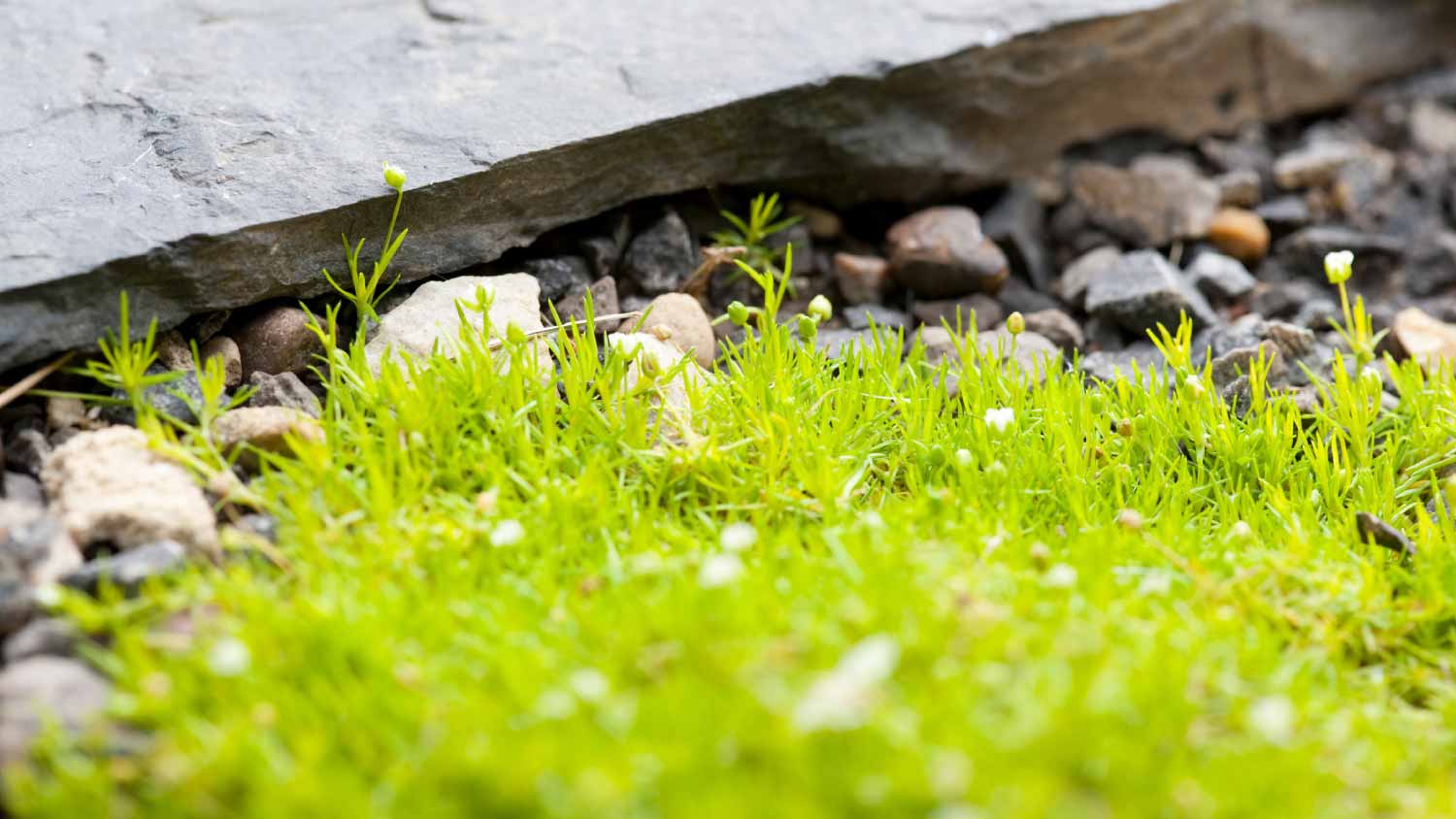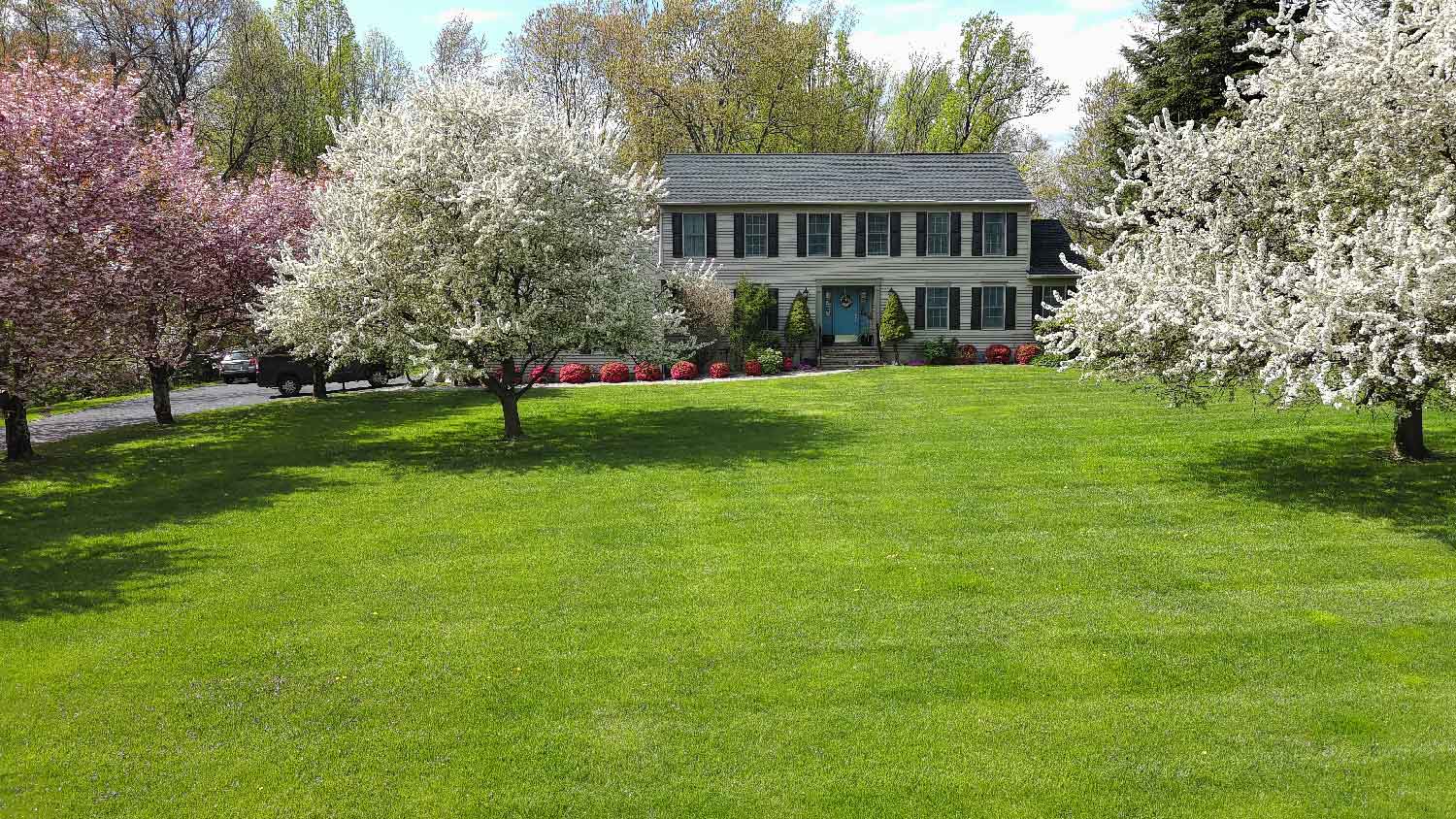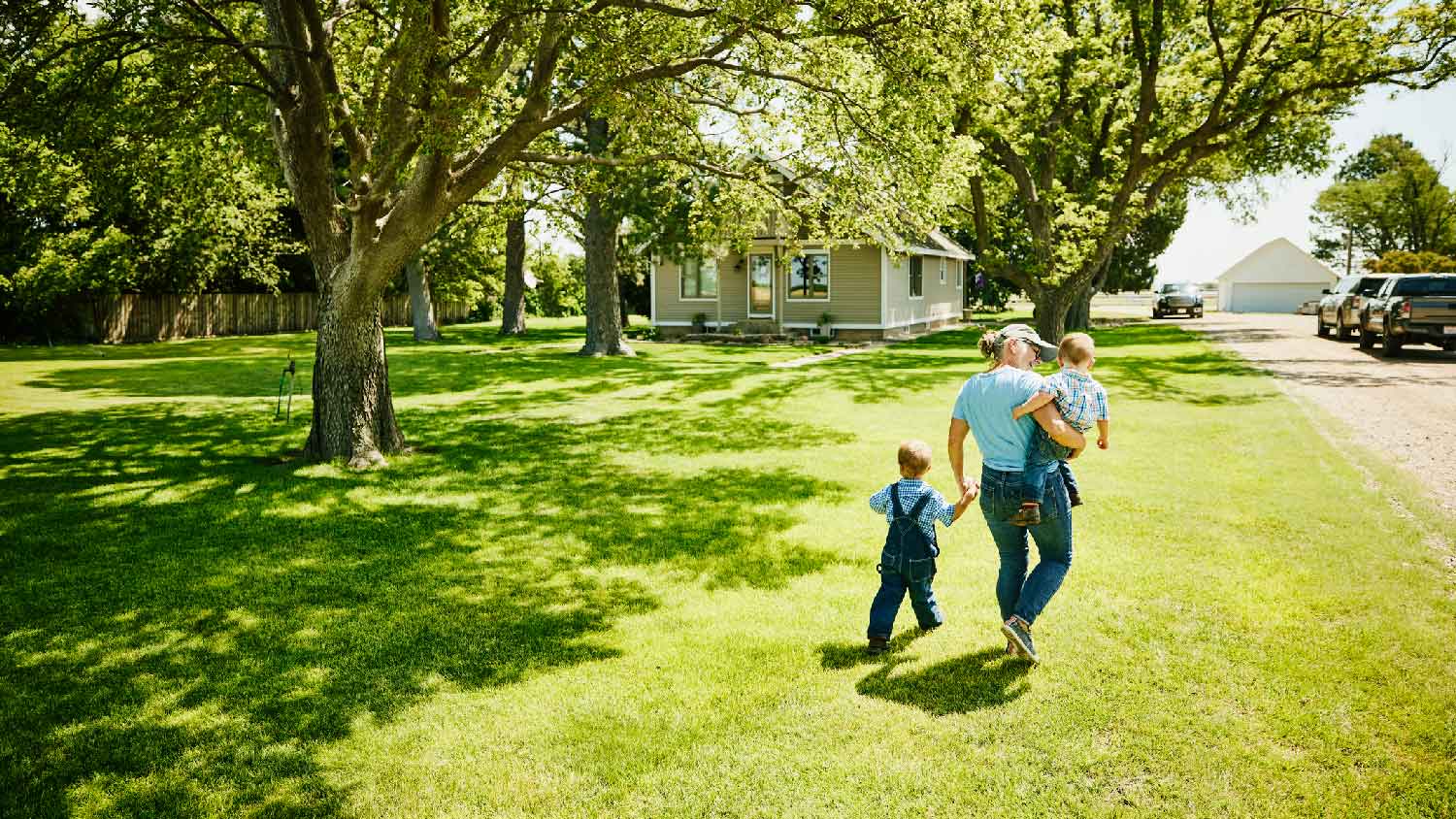How Often Should I Aerate My Lawn? How to Help Your Yard Breathe Better
Keep your grass breathing easy


How easily the soil underneath your lawn gets compacted is what determines how often your yard should be aerated.
Heavy foot traffic in your yard may mean you need to aerate more frequently.
The type of soil and the condition it’s in compared to when your home was built are also important factors in aeration frequency.
You’ll know it’s time to aerate the lawn if the soil is obviously compacted and you can’t poke a sharp tool into it easily.
“How often should I aerate my lawn?” is one of the most common questions that lawn-loving DIYers ask. Yards are incredibly complex ecosystems that could rival any biology textbook! Soil content, climate, sun exposure, foot traffic, and other factors all impact whether you’ll have luscious greenery or withering brown thatch. Most people should aerate their lawns once a year, but you might need to aerate more often or do it only every two or three years. We'll show you the factors that come into play regarding how often you should aerate your lawn.
Factors That Affect How Often You Should Aerate Your Lawn
As we mentioned, most people will want to aerate once a year, but that may not be the case for everyone. Take the following factors into consideration when planning your aeration schedule for the year.
Your Yard’s Foot Traffic
Foot traffic is usually the defining factor for that annual aeration rule of thumb. Most people only need to schedule lawn aeration once a year because the typical household usually doesn't see intense foot traffic.
Heavy foot traffic compacts your lawn's soil and its ability to get nutrients. Think about how navigating a crowded room at an event with a nice spread makes it less likely that you'll get to the buffet table with any of the good bites left. By the time you make it through that congested room, half the dishes are empty. That's pretty much what happens to your lawn if you frequently hold huge lawn parties worthy of The Great Gatsby. The soil under the grass is being cut off from its own buffet table of oxygen, water, and other nutrients that it needs to thrive.
You might need more frequent aeration if you have a large household, several furry friends, or frequent guests. Compacted soil can make lawn maintenance more difficult and expensive since it encourages the growth of weeds and makes your lawn susceptible to drought.
Inversely, if your lawn is more like a tranquil meadow than a soccer field, you may only need to aerate every two or three years.
Soil Type and Conditions

Soil varies by your local climate, the type of home you have, and other factors you often can't control. Certain parts of the U.S., like the Southeast and pockets of the Northwest, are rich in clay soil. Clay soil is like junk food for plants. It's very heavy with little nutritional value, making it harder for plants of any kind to flourish. Lawns are no exception. Because clay soil is so heavy, it also compacts more easily than other soil types.
If your home was built recently, it's also possible that the construction workers inadvertently compacted the subsoil after they buried the topsoil. Their heavy foot traffic during the time they built your home could have severely compacted the ground, causing it to need immediate aeration.
If your lawn is sod, it's possible that the soil is layered with fine sod on top of coarse soil. This can cause impaction because the crooked layers can constrict the drainage and disrupt the root systems.
How Do You Know If Your Soil Is Compacted?
Checking if your soil is compacted is a lot like testing whether or not a cake is thoroughly baked by seeing if a toothpick comes out clean. Take a long, thin tool like a screwdriver and poke it into the soil. If it smoothly goes in, your lawn is fine and doesn’t need aeration. If you’re struggling to push the screwdriver into the soil, that’s a sign that it’s compacted and needs aeration.
The Benefits of Aerating Your Lawn
The chief benefit of aerating your lawn is getting happy, healthy grass that equates to a beautiful yard overall. Aeration also helps root systems establish and deepen, which means you're less likely to see dead grass, even during hard times.
Aeration reduces soil compaction and shrinks the puddles that form in lawns with compacted soil and uneven drainage fields. It helps manage thatch levels that, if left unchecked, can become home to unwanted guests like rodents and other invasive critters.
Aeration makes root systems grow and thrive and increases turf density, which gives healthy lawns that “manicured” look.
If you have dead patches in your yard, you may need to aerate those sections again to penetrate deeper. But never aerate your lawn more than two times.
DIY vs. Hiring a Pro
Should you call your local lawn aeration service or look into doing it all yourself?
Professional lawn aeration costs $75 to $250 depending on your lawn’s size, soil conditions, and if you have liquid or spike aeration done. You may also need additional services, like mowing and dethatching, to get your lawn ready for aeration, or you can do these tasks yourself. Lawn mowing costs can add another $50 to $210 to your aeration service.
While having a lawn mower at home is common, most homeowners don’t have lawn aeration equipment. Renting a lawn aerator can cost $150 to $250 per day, not counting deposits and damage fees if you operate it incorrectly. Hiring lawn professionals is the way to go since they have the right equipment and know-how to manicure a lawn for a lower price while you can kick back and relax.
Frequently Asked Questions
Try the tool test first. A screwdriver or a similarly long, thin tool will work best, as spades and shovels are too big. If something still seems off despite the screwdriver smoothly going into the soil, look for other signs that you need aeration, like thinning grass, discolored areas, and puddles forming on your lawn after light rain. This indicates poor drainage because of too many areas being compacted.
This ultimately depends on the climate and weather patterns where you live, as the amount of time in which soil stays warm plays a big role. For most households, late summer and early fall (think August through October) are the best times to aerate your lawn. This is because the disruption to the grass and soil won't be as impactful, and it will have time to recover before winter. Early springtime also works well if you have a cool-season lawn.
Lawn aeration and dethatching are meant to solve the same problem, loosening up compacted soil so that the root systems can grow and receive more water, oxygen, and nutrients. Aeration is the gentler option and often the preferable one. Dethatching completely tears out the thatch layer of the lawn and can inadvertently yank out healthy grass if done incorrectly. Aeration loosens the soil and only removes small cores of it.





- 7 Benefits of Aerating Your Lawn and Why You Should Add It to Your Lawn Care Regimen
- Should You Mow After Aeration? How Long to Wait and Potential Pitfalls
- Do I Need to Aerate My Lawn for Healthy Grass?
- 11 Must-Know Lawn Aeration Tips for the Greenest Grass on the Block
- Who Can I Hire to Aerate My Lawn and How Much Does It Cost?
- A Yard-Lover’s Guide on How Deep to Aerate Lawns for the Lushest Grass
- Does Liquid Aeration Work? What to Know Before You Start
- What to Do After Aerating Your Lawn: A Post-Aeration Checklist
- Here’s When to Aerate Your Lawn for the Best-Looking Yard Ever
- What Is Lawn Aeration? A Complete Guide to Letting Your Lawn Breathe











